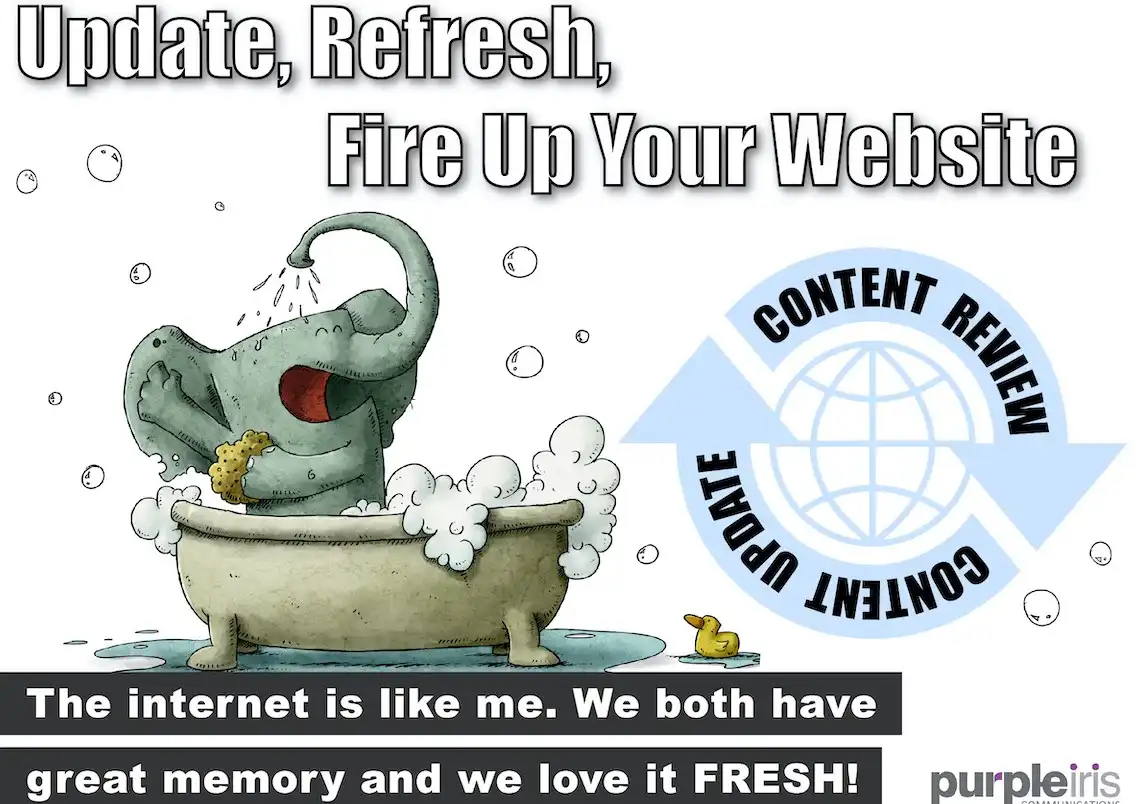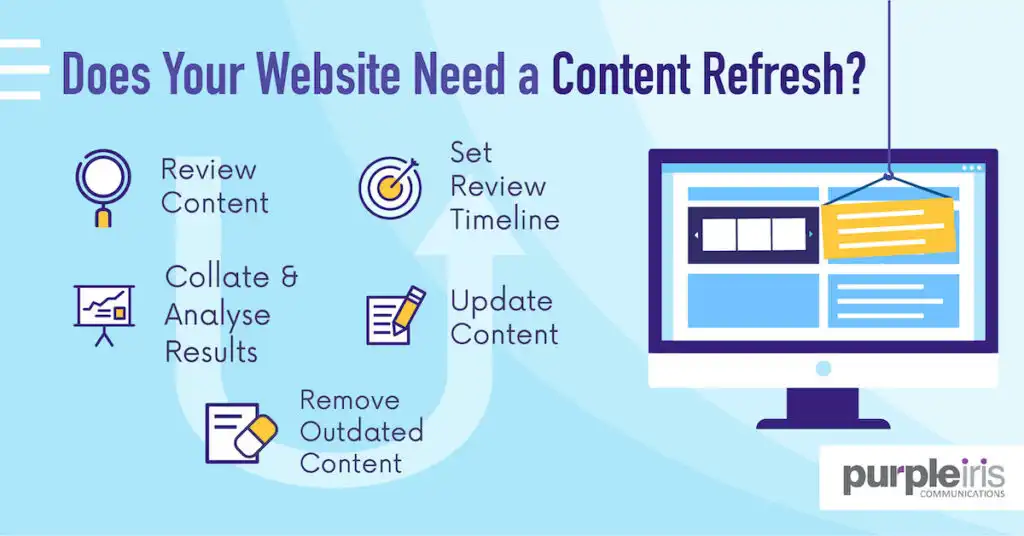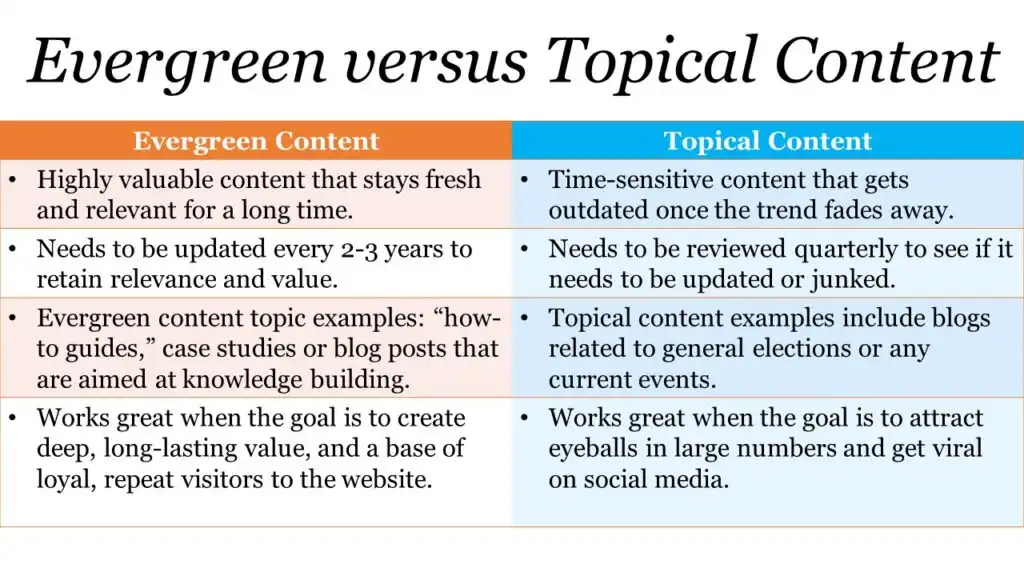
Content Audit: 5 Steps To Improve User Engagement
20 August 2020
Team Purple Iris
You must have heard this already: the Internet does not forget.
But what you may not have heard is this: the Internet is a freshness fanatic.
What it means is that though any content you upload stays online for an indefinite amount of time, it loses its freshness in no time. Unless you regularly conduct content audits, user engagement in your website will drop. And search engines will penalise the website by pushing it way down in their ranking.
With a billion websites on the Internet, web content has a rather tough, constant battle to fight to vie for attention and keep drawing online traffic. Secondly, users do not have patience for content that has lost its relevance, is inconsistent in terms of messaging, or portrays a lack of touch with current trends and developments.
This is where content audits of websites come in. A content audit must include not just an analysis of your website from the point of view of search engine optimisation (SEO) but also for content relevance, messaging and tone of voice. If you regularly perform content audits, the user engagement in your website will soar.
Why content audit is essential for user engagement
Websites contain both evergreen content that has a long shelf life and topical content that stays relevant for a rather short period of time. How much of the website’s content falls in which category depends on your content strategy.
If staying on top of trends to drive traffic is your strategy, you will be veering towards creating an enormous amount of topical content. If you want to create value for your users in the long term, you will be investing in creating evergreen content.
However, even evergreen content needs updating. Over time, older content gets pushed to the back of search engines and the resources you have created will become invisible to a user.
Statistics reveal that not updating your website for just a month can cause traffic to drop by 32 percent.
Moreover, users have access to information from multiple sources. Hence, to retain a visitor’s interest in your website, the content must be up-to-date and relevant.
Website content audits and reviews are also important after major developments that may have impacted your business or the environment in which you operate. Covid-19 is one such major development that has disrupted the way businesses are run and customers are served. This is a good time to crawl through your website to pick and change text, images, messaging or tone that do not go with the current business environment.
We have curated five steps that you can take to make this process simpler and smoother.

Step 1. Initiation: Review your web content inventory
Look through the different sections of your website and flag the content that needs updating. Start by creating an inventory of all your web links, if you do not have one already.
Each of the sections — from ‘about us’ and products and services to the blog site — serves its own purpose. Review the content for each section with three questions in mind — is it outdated, does it still serve my business and how is it performing?
Identify the evergreen content that you have created to garner steady traffic and leads. An example of evergreen content will be “how-to-guides” or a blog post like this one that provides readers foundational knowledge about a subject.
Look through the topical content that you have published that refers to time-sensitive, trending topics. Most of it may have become outdated once its news-worthiness has diminished. But you may be able to extend the lifespan of some of it by updating the information. You can then identify the topical content that can be spruced up or needs to be junked.
Step 2. Planning: Collate and analyse the results
Now that you have reviewed each web page, look through the results.
Does the evergreen content sound like it is caught in a time warp? Has there been a change in your corporate messaging that does not reflect in what you are projecting in your evergreen content? The industries you serve have gone through turmoil due to Covid-19. Do the pages dedicated to the different industry verticals you serve acknowledge that?
Next, analyse the web analytics across your pages and try to understand what the website’s users are doing. Why are they visiting certain pages more or spending more time on certain pages and not on others? This exercise can be particularly insightful for blog posts and downloadable resources such as case studies, white papers and guides.
This is also a good time to pay attention to the website design, layout and graphics. Ask for feedback from users on how you can improve their user engagement and experience from both the content and design points of view.
Spend some time to check what your competitors are talking about on their websites. Have you missed any emerging topics on your blog site or resources section that your competitors are capitalising on?

Step 3: Take out all your tools…snip, trim, brush
Think of yourself as your website’s gardener — prune out bits that are not doing well, and completely weed out what cannot be salvaged.
Let us take a few examples to understand this stage of the content audit process and how it impacts user engagement.
- Over the years, your company’s capabilities have evolved but that is not reflecting in your corporate positioning. Check what parts need to be removed from the ‘about us’, or products and services sections.
- Look at the content through the lens of cultural sensitivity. Do the images on your website portray cultural and gender diversity? If they do not, it is time to remove photos and graphics that show bias, for example images with only men in leadership positions or only people of certain ethnicity in a team.
- Sometimes sensitivity relates to major, unpleasant events. Here is an example. We had written an article for a client’s e-newsletter on infrastructure building for which the designer had chosen a photograph with tall glass buildings and a plane flying overhead. When it went for approval to the client’s communications team in the US, they had an objection. They said such an image would send out negative messages in a reader’s mind in the US (because of 9/11). We decided to replace the image. Though the publication was only targeted at readers in Asia, it was being hosted on the client’s website, and hence had a global reach. So, be mindful of how images and text on your website may be interpreted by different users.
Step 4: Update, refresh, fire up your website
Now that you have taken down some rusty content, it is time to inject some freshness to your existing content. Not all content needs to be removed; a lot of it will only need some tweaking to continue to be relevant.
Go back to the analysis that you had done earlier and figure out how you can embed and optimise your content with the fresh set of keywords that you have found.
Here are a few examples to guide you on what to look for while updating your website during a content audit.
- Talent: The company now has a global footprint, which means it needs to attract talent from different countries. Include new facts that show the company’s culture and people practices that will attract global talent.
- Products and services: Covid-19 may not have changed your offerings but you may have made some adjustments to incorporate new client needs during this time. Let that reflect in your offerings pages.
- Resources: A blog you published on current trends in digital marketing is still relevant. But the data you have quoted is old. Do a quick data refresh and republish the blog.
Use this exercise to also note down existing content that you can repurpose and bring more value to your users. Repurposing content is vital as it helps expand the lifespan of your content and attract new unique leads. For example, can you create standalone infographics out of some of the case studies or convert a white paper into multiple blogs?
Step 5. Set a review timeline for different types of content
Now that you have updated your website, it is time to make this a habit. Think about how often you would like to prune and audit the content on your website. Make the content inventory that you have created on a spreadsheet the base for future reviews. Park all active weblinks and its respective multimedia elements on this spreadsheet and review it quarterly.
This will help you keep track of your content and enable you to improve its performance and value. Committing to a timeline helps assign the website content audit the priority it deserves.
A content inventory also helps you get a bird’s eye view on how different parts of your website are faring over a period of time. This will help you keep an eye on the technical parts of website maintenance like broken links, website performance issues and speed.

Using content audit to Improve user engagement: A continuous journey
With these five steps, you will be well on your way to building and sustaining a successful website with highly valuable content. Incorporate learnings from previous content audit and review sessions as you proceed to continuously augment user engagement and SEO ranking.
As you pivot your business for a post-Covid-19 world, this is the right time to review your website content. Refreshing your content will give your business an edge in digital marketing in today’s digital-first business environment.
How can we help? Read about our web content services and tell us what we can do for you.
